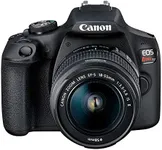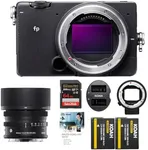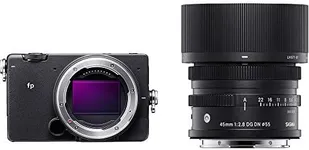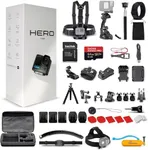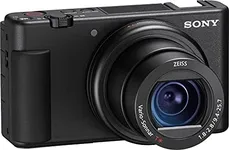Best Vlogging Cameras
From leading brands and best sellers available on the web.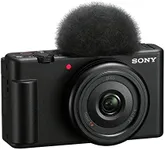
Sony
20%OFF
Sony ZV-1F Vlog Camera for Content Creators and Vloggers Black
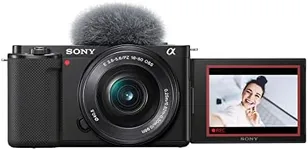
Sony
13%OFF
Sony Alpha ZV-E10 - APS-C Interchangeable Lens Mirrorless Vlog Camera Kit - Black
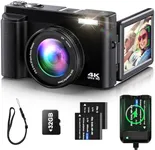
YIGLLO
9%OFF
4K Digital Camera for Photography Auto-Focus Vlogging Camera for YouTube Video with 3'' 180° Flip Screen 16X Anti-Shake 4K Camera Compact Cameras with SD Card, Flash, 2 Batteries & Battery Charger
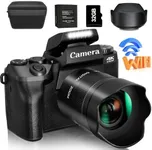
Saneen
Saneen Digital Camera, 4k Cameras for Photography & Video, 64MP WiFi Touch Screen Vlogging Camera for YouTube with Flash, 32GB SD Card, Lens Hood, 3000mAH Battery, Front and Rear Cameras - Black
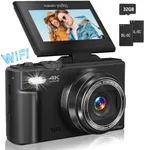
Gavonde
Gavonde Digital Camera for Photography, 4K Vlogging Camera for YouTube 3" 180° Flip Screen 18X Digital Zoom Compact Retro Camera with 32GB TF Card & 2 Batteries, Black
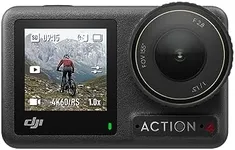
DJI
17%OFF
DJI Osmo Action 4 Standard Combo, Waterproof Action Camera 4K with 1/1.3" Sensor, Low-Light Imaging, Long-Lasting 160 Mins, Stabilization, Dual Touchscreens, Vlogging Camera for Travel, Sports
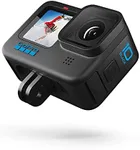
GoPro
7%OFF
GoPro HERO10 Black - Waterproof Action Camera with Front LCD and Touch Rear Screens, 5.3K60 Ultra HD Video, 23MP Photos, 1080p Live Streaming, Webcam, Stabilization
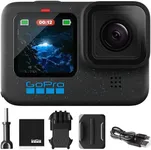
GoPro
GoPro Hero12 Black E-Commerce Package - Waterproof Action Camera with 5.3K60 Ultra HD Video, 27MP Photos, HDR, 1/1.9" Image Sensor, Live Streaming, Webcam, Stabilization
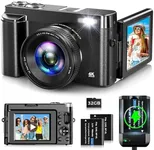
Oiadek
4K Digital Camera for Photography Autofocus 48MP Vlogging Camera for YouTube with 3'' 180°Flip Screen 16X Digital Zoom 4K Video Compact Travel Camera with SD Card,Flash, Anti-Shake (Black)
Our technology thoroughly searches through the online shopping world, reviewing hundreds of sites. We then process and analyze this information, updating in real-time to bring you the latest top-rated products. This way, you always get the best and most current options available.

Most Popular Categories Right Now
 Yehudah Posnick
Yehudah PosnickA Guide to Selecting a Vlogging Camera
Vlogging (short for video blogging) refers to the practice of creating and sharing video content online. You may want to document unique travel adventures, tutorials, or product reviews. Vlogs can range from casual and unscripted recordings to highly produced and edited videos, depending on the style and preferences of the vlogger. But, in order to have a quality raw video to work with to eventually upload to YouTube or social media, you’ll need a good vlogging camera.
We’ll have a look at some of the major specs for selecting a good camera for producing quality videos. There are camcorders that you can try out, or maybe you can use a DSLR or mirrorless digital camera as a webcam. We’ll look at factors such as the quality of the camera’s sensor, the camera’s ability to take pictures in different settings, and image stabilization features. Hopefully, we’ll have covered the main points so that you can decide on the right vlogging camera for your needs!
Types
There are several types of cameras that are suitable for preparing videos for blog posts:
-
DSLR Cameras: Digital Single Lens Reflex (DSLR) cameras are popular among vloggers due to their versatility, image quality, and interchangeable lenses. They offer manual controls, excellent low-light performance, and the ability to achieve a shallow depth of field. A DSLR camera that’s capable of recording 4K video is the Canon EOS 90D. It has a 32.5 MP APS-C sensor, which is considered outstanding for a DSLR camera.
Canon EOS 90D
-
Mirrorless Cameras: Mirrorless cameras have gained popularity in recent years for vlogging. They are smaller and lighter than DSLRs and offer comparable image quality. But because they have fewer moving parts inside, they have better longevity than similar DSLR cameras. Mirrorless cameras have interchangeable lenses and many advanced features, including 4K video recording, fast autofocus, and built-in stabilization. An example is the Sony Alpha ZV-E10 - APS-C Interchangeable Lens Mirrorless Vlog Camera. It’s capable of recording 4K movies, and can easily toggle between focusing on an object, or on the background.
Sony Alpha ZV-E10 - APS-C Interchangeable Lens Mirrorless Vlog Camera
-
Point-and-Shoot Cameras: These compact cameras are portable and easy to use. They are a good choice for vloggers who prefer a simple setup. Point-and-shoot cameras have built-in lenses and automatic features that make them convenient for everyday vlogging. An example is the Sony ZV-1 Digital Camera for Content Creators, Vlogging, and YouTube. It has a 20.1 MP resolution and can record in slow-motion as well as 4K HDR video.
Sony ZV-1 Digital Camera for Content Creators, Vlogging, and YouTube
-
Action Cameras: Action cameras, such as GoPro, are designed for capturing footage in extreme conditions and outdoor activities. They are compact, lightweight, and often feature rugged, waterproof designs. Action cameras are popular among adventure vloggers and those who want to capture their experiences hands-free. A good example is the GoPro HERO11 Waterproof Action Camera. It’s capable of Ultra HD video as well as still photos at 24.7 MP resolution.
GoPro HERO11 Waterproof Action Camera
-
Smartphone Cameras: It might have seemed ridiculous at first, considering the difference in sensor quality between a smartphone camera and a mirrorless compact camera. But many vloggers use smartphones as their primary vlogging cameras due to their convenience and ever-improving camera capabilities. Modern smartphones often feature high-resolution cameras, advanced image stabilization, and various shooting modes. They are portable, always at hand, and can easily connect to social media platforms for quick sharing. A good example is the Samsung Galaxy S20 Ultra, with a 40 MP front camera, a 12 MP and 108 MP ultra-wide angle camera, and a 48 MP telephoto camera!
Samsung Galaxy S20 Ultra
-
Camcorders: Traditional camcorders are still widely used by vloggers, especially those who prioritize video recording features. Camcorders offer dedicated video controls, long battery life, and often have built-in microphones for better audio quality. The Panasonic Full HD Video Camera Camcorder is a very affordable camcorder for vlogging purposes.
Panasonic Full HD Video Camera Camcorder
What Reviewers Have to Say
We went over some customers’ impressions of the vlogging camera that they bought:
-
Expect to make a lot of adjustments: One customer who bought Sony Alpha ZV-E10 - APS-C Interchangeable Lens Mirrorless Vlog Camera was very impressed with the quality of the video recording. But this was only after dialing in all of the different parameters. Don’t expect to be able to just pick up the camera and start filming.
-
Battery life: Most vlogging cameras recharge via a USB cable. But the batteries tend to drain quickly. One customer could only get around two hours of filming before having to charge up again.
-
File transfer: Some customers said that using the camera’s WiFi connection to transfer videos from the camera to their computer took quite a few steps and a long time. It was easier to just remove the SD card from the camera and put it into their computer directly to transfer the pictures.
Important Features
Here are some tips about features to look for when choosing a vlogging camera:
-
Stability of the camera: It’s best to take a video while your camera is on a tripod since it will remain stationary. But, if you’ll be preparing a vlog while holding the camera in your hand, your camera should have means to compensate for shaking or jerky movements. There are cameras with In-body image stabilization, or IBIS, which reduces the effects of camera shaking when recording videos. The IBIS system works by detecting and compensating for the unwanted movements or vibrations that occur when holding the camera. The camera's sensor is mounted on a movable platform that can shift in multiple directions, including up-down, left-right, and rotational movements. When the camera detects motion, it moves the sensor in the opposite direction to counteract the movement and keep the image stable. That will produce sharper, smoother videos.
-
Low-light performance: If you use a camera for vlogging, you’ll want it to be able to take videos even in low-light conditions. There is a parameter called the “Exposure Value”, or EV, which is a combination of the camera’s shutter speed and aperture size (expressed as f/1.4, f/2.8, f/5.6, etc., with the larger number in the denominator indicating a smaller aperture). A slow shutter speed lets in more light, as does a large aperture. An EV of 0 is a 1-second exposure at an aperture size of f/1.0 or a 2-second exposure at f/1.4. An EV of 15 is a daylight scene with full sunlight, while EV -4 means a night scene with a full moon. The Fujifilm X-S10 Mirrorless Camera is capable of operating at a light level as low as EV -6, which is a night scene with very little ambient light.
-
Audio capabilities: You’ll also want to record audio while making a video to upload to YouTube or social media. Most vlogging cameras will be able to record audio already. But, for more professional results, you may want to add a wireless Lavalier microphone or shotgun microphone to your camera.
-
Video frame rates: You’ll see that a single camera can record video at 60p or 30p. What is that supposed to mean? Well, the “p” stands for “progressive”, as opposed to “i”, for “interlaced”. A progressive scan means that all of the lines in a video image are drawn on the screen progressively, in sequence. An interlaced scan means that first the odd-numbered horizontal lines were drawn, and then the even-numbered lines are drawn, and then the two scans are interlaced. A progressive scan will produce a smoother picture than an interlaced scan. If a camera records at 60p, that means that it captures 60 images in their entirety, every second. Experts recommend the following video frame rates, depending on the intended purpose:
-
30p: for home movies
-
48p: for faster action, such as when recording skiing or kayaking with a GoPro camera
-
60p: for recording professional sports events. This frame rate in common in camcorders.
-
So, when you see that the Fujifilm X-S10 Mirrorless Camera can record in 4K/30p and Full HD/240p, you’ll use the 4K/30p for home movies, and the FHD/240p for a VCR recording, which may appear blurry on a high-definition device.
Final Verdict
We went through some of the features and specs of the best vlogging cameras available nowadays. Fortunately, with all of the technological advancements, you can find even vlogging mirrorless cameras that are in the same price range as DSLRs. And there are considerations like sensor quality, the ability of the camera to take pictures in low-light conditions, and stability factors. Look over the cameras in the Best Reviews Guide list, consider what are your vlogging needs, and select one today!


